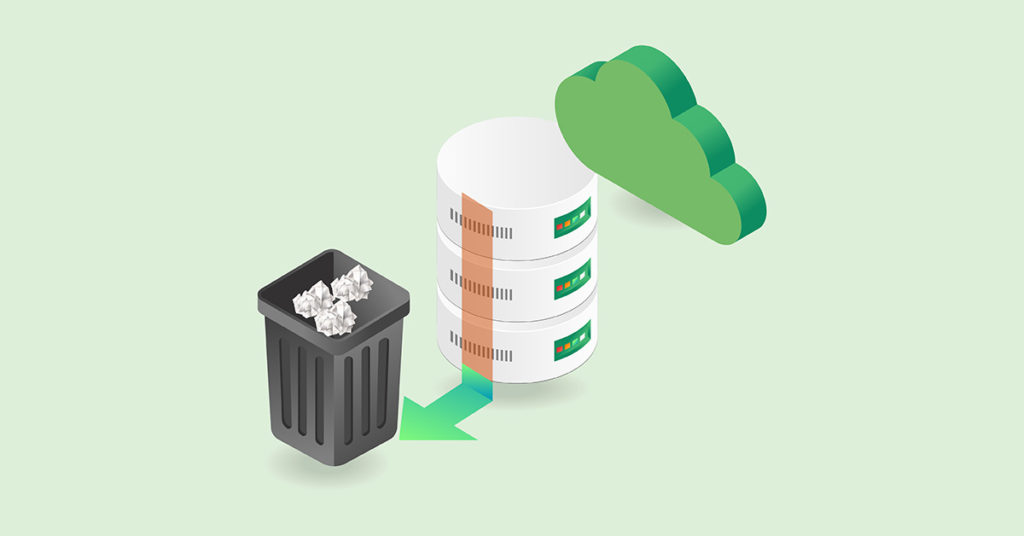With most companies remodeling their business strategies to leverage the benefits of the cloud, its impact cannot be overstated. One of the biggest advantages of opting for a hybrid or completely cloud-based approach is the cost savings. However, data shows that many corporations are getting poor returns on investment (ROIs) and underutilizing their cloud spending. In fact, most organizations are wasting around 30% of their total cloud expenditure which is simply unacceptable in this era of optimization.
What is Cloud Cost Optimization?
Cloud cost optimization is a set of practices that allows businesses to obtain maximum resources and services for their investment. The goal is to ensure you are getting added value, reducing waste, and avoiding unnecessary overspending while achieving all of your performance objectives. Gartner predicts that 80% of companies are expected to overspend on cloud services between 20-50% by 2024. This can be avoided if business owners identify their mistakes and rectify them by adopting certain best practices. Any organization that wants to take the most from the cloud needs to take the necessary measures that will ensure that their business will be excluded from these statistics.
Tips for Optimizing Your Cloud Cost
Cloud strategies are constantly evolving. Following are some of the latest trends in cloud cost optimization that you must integrate into your business model to get the best out of the services you pay for.
- Performing Self Assessment
Begin with a thorough assessment of your current system needs, failures, and expectations. Ensure that you are taking the future state of your cloud architecture into account. Doing so helps mitigate any surprise costs during and immediately after the migration phase.
It is also useful for companies to practice right-sizing by purchasing only the resources that they need without any surplus to waste. You can use your recent application activity to make very accurate estimates regarding the amount of resources you need to reserve to maintain sufficient performance levels. It is a continuous process that ideally requires regular monitoring as your business grows over time to make sure your initial predictions align with current requirements. Right-sizing at the right time prevents overallocation and under-allocation of resources so that neither the budget nor performance suffers at the expense of the other.
- Burstable Instances
We also recommend that companies take advantage of burstable instances to maximize savings. Burstable instances offer low-level CPU performance for cheaper with the ability to spike up as needed with unused credits. These are well suited for small websites and applications or testing environments.
In addition, certain cloud providers like CloudSigma allow users to combine subscription and burst pricing models at their convenience. You can purchase a set amount of resources upfront and then, CloudSigma can charge you on burst automatically if you go overhead for a temporary period of time. You will be billed in short five-minute cycles from your account balance. This model gives users tremendous flexibility, as they are able to react quickly whenever their consumption requirements change, without incurring unnecessary costs. It is also very useful when it comes to testing environments, giving you the freedom to run experiments without the need for big investments.
- Automation to Conserve Resources
Automation is a critical component of any good cloud strategy, but most businesses fail to utilize it to cut down on costs. Business owners are just starting to understand how much of an impact automated scheduling and notifications have on reducing overall cloud expenditure. Companies should use automation to cordon off extra, unused resources during non-peak hours, especially if using a service with prepaid resources. Heat maps are helpful tools to figure out when computing demands and traffic are the highest on applications. Automated, custom alerts allow you to keep track of your resource limits, storage volumes, and unused instances. Such real-time monitoring facilitated by automation is quickly becoming the norm in most organizations.
- Eliminating Micro Waste
Unused and idle (zombie) resources are often the source for most overspending in the cloud. They continue to suck up resources without being of any use. You can eliminate micro waste by terminating excess instances and deleting associated processes and storage. In addition, it will be useful to take a second look at your data storage- duplicated data takes up a lot of space and often goes unnoticed by IT managers. If you are wary of accidentally deleting or overwriting data, put the object versioning feature to good use. In case you do want to keep multiple copies to increase data resiliency, a better approach is to use data buckets in different servers/regions. Let go of idle IP addresses that are consuming instances and incurring extra charges.
- Availing Savings Plans
Most importantly, you need to make an informed decision when choosing your cloud service provider. Most service providers will offer a host of pricing models with various tiers and amount of resources or features. Try to avail discounts and opt for savings plans wherever you can. Savings plans allow you to make one to three-year-long commitments at considerably reduced prices for a good chunk of resources which can prove to be a great investment in the long run.
Maximizing Cloud Cost Efficiency With CloudSigma
There is no algorithm that dictates the exact right steps to take when it comes to cloud resource utilization or cost optimization. In the end, what matters most is choosing the right cloud service provider that will enable your business to maximize savings without compromising on performance. CloudSigma has helped a myriad of businesses maintain their performance metrics while cutting down on cloud expenditure as much as possible. For example, Swiss company ORCA leveraged CloudSigma’s cost optimization benefits to evolve into a web development company from an ISP. CloudSigma also helped GENIO GROUP with a simplified utility pricing plan that accommodated the flexibility they required in their infrastructure configuration.
CloudSigma’s dynamic pay-as-you-use model for both the IaaS and PaaS solutions ensures companies are not paying for resources that they are not using. Instead of packaging services into rigid bundles, we offer custom solutions with the ability to scale up and down on demand as per current and projected needs. If you have any questions about our pricing plans, do not hesitate to get in touch with us!
Until then, happy computing!
Try CloudSigma for Free for 7 days
- 5 Tips to Achieve Optimal Cloud Computing Cost Efficiency - October 31, 2022
- CloudSigma Empowers Blockchain Infrastructure Provider with a Green, Reliable, and Cost-Efficient Cloud Platform - October 27, 2022
- Whitech Launches New Egypt Cloud Computing Offering, Powered by HPE and CloudSigma - October 17, 2022
- Key Aspects of Protecting your Data in the Cloud - September 20, 2022
- How to Configure MongoDB Replication and Automated Failover - September 19, 2022




